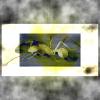Edited by YsTheAnt, January 25 2018 - 6:37 PM.
- Formiculture.com
- Forums
- Gallery
- Members
- Member Map
- Chat

My Main Journal | My Neivamyrmex Journal | My Ant Adoption | My YouTube
Join the TennesseeAnts Discord Server! https://discord.gg/JbKwPgs
I don't have too much experience identifying Linethipema, but from what I understand, Dorymyrmex worker gasters are typically stubbier and less elongated than their invasive cousins'. I think some Dorymyrmex species' legs are generally longer and heads may also be wider than Linethipema.
The easy way would be to identify where they're nesting. Dorymyrmex are more likely to live in dirt or sand mounds in open areas and are unlikely to nest in the sides of houses or unconventional ant "nests".
I visited San Jose in the summer and don't believe I encountered Dorymrmex, but Linethipema were quite common. I think you're more likely to find pyramid ants closer to the desert than San Jose.
I don't have too much experience identifying Linethipema, but from what I understand, Dorymyrmex worker gasters are typically stubbier and less elongated than their invasive cousins'. I think some Dorymyrmex species' legs are generally longer and heads may also be wider than Linethipema.
The easy way would be to identify where they're nesting. Dorymyrmex are more likely to live in dirt or sand mounds in open areas and are unlikely to nest in the sides of houses or unconventional ant "nests".
I visited San Jose in the summer and don't believe I encountered Dorymrmex, but Linethipema were quite common. I think you're more likely to find pyramid ants closer to the desert than San Jose.
I agree with Void here. I used to keep Dorymyrmex bicolor, and I remember they were quite leggy.
Dorymyrmex******* (btw) Funny, I have both Argentines and Dorymyrmex insanus in my house right now, waiting for more workers from the Dorymyrmex, but have 50+ workers from the Argentines (for experimentation). I can compare them once I get more workers, the first worker died on me recently. ![]() From what I remember they look pretty close.
From what I remember they look pretty close.
Dorymyrmex have a little cone-like structure on their thorax.
Dorymyrmex******* (btw) Funny, I have both Argentines and Dorymyrmex insanus in my house right now, waiting for more workers from the Dorymyrmex, but have 50+ workers from the Argentines (for experimentation). I can compare them once I get more workers, the first worker died on me recently.
From what I remember they look pretty close.
Haha, when you said "in my house" my first reaction was, in your house as pests? #kitchenants
-AntsMaryland
Aphaenogaster cf. rudis
Tetramorium immigrans
Tapinoma sessile
Formica subsericea
Pheidole sp.
Camponotus nearcticus
Anting →
Ant ID Requests →
Lasius or Dorymyrmex? | Apopka, Florida | 5-15-2024Started by The_Gaming-gate , May 15 2024 |
|

|
||
Ant Keeping →
General Ant Keeping →
Cone ants (Dorymyrmex bureni) prone to panic, deciding to move house over any little thing.Started by futurebird , Jun 18 2023 |
|

|
||
Anting →
Ant ID Requests →
Formica or Dorymyrmex ? Las Vegas, NVStarted by olrakbt , Aug 27 2020 |
|

|
||
Market Place →
General Market Place →
Zaint's Zenful Collection Sale (California)Started by zantezaint , Aug 4 2020 |
|

|
||
Ant Keeping →
Ant Keeping Journals →
My Dorymyrmex has kidsStarted by paul12000 , Jul 29 2020 |
|

|
0 members, 1 guests, 0 anonymous users